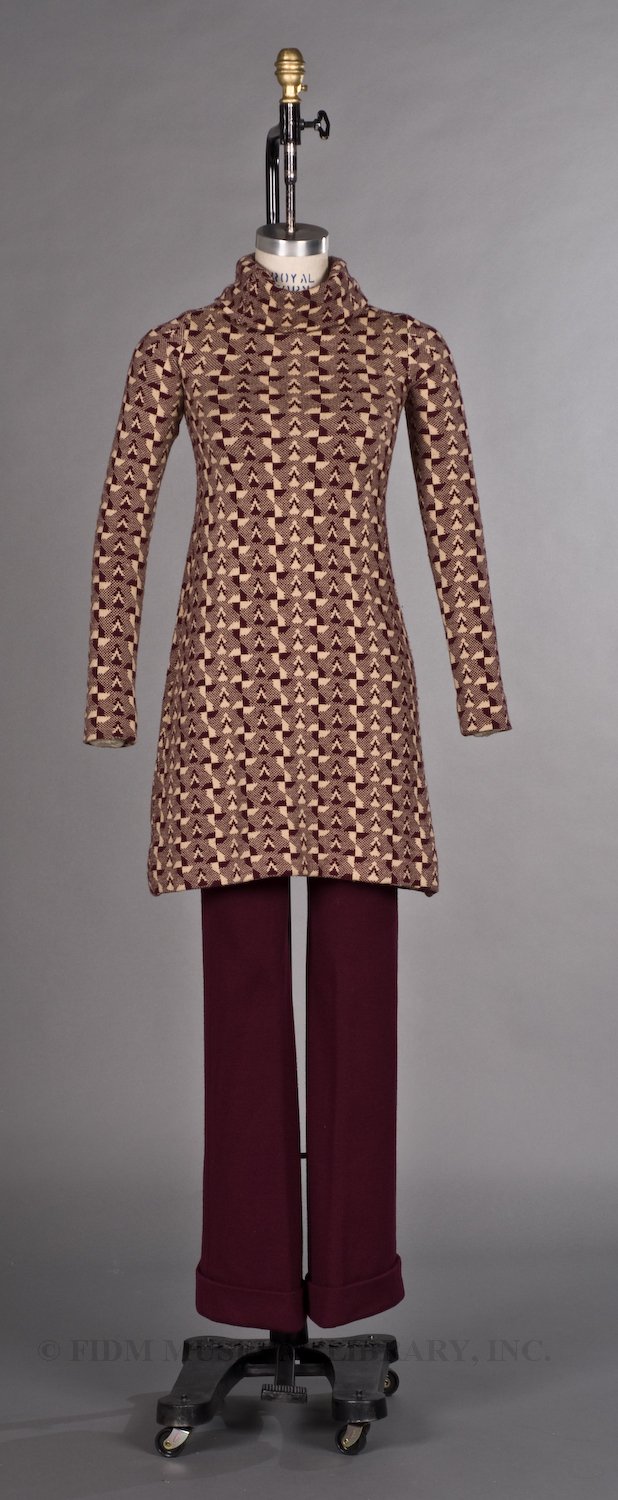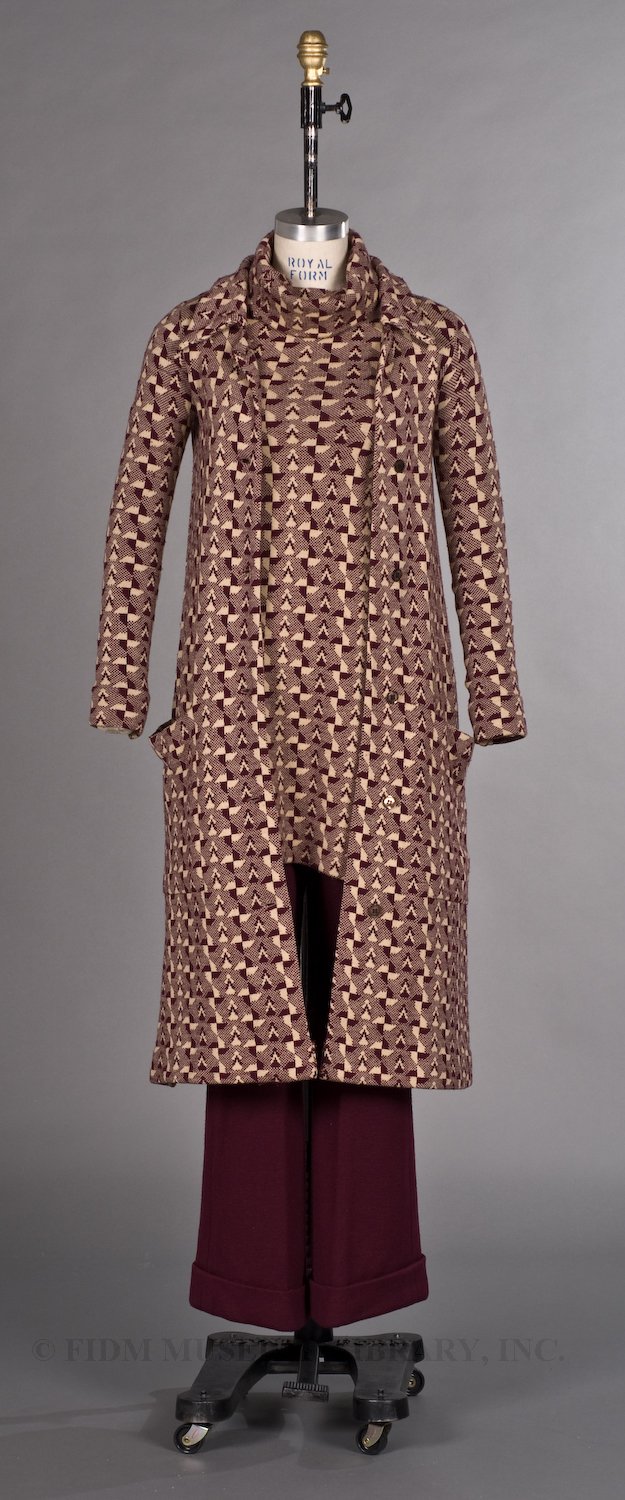Sonia Rykiel tunic and pants, 1970
The late 1960s controversy over mini, midi and maxi skirt lengths continued into the early 1970s. Though some designers began experimenting with longer skirts, women declared their loyalty to the mini. In 1970, a young Philadelphia woman spoke for many when she said, "I'll keep wearing the mini even if it goes out of style."1 This loyalty to the mini caused confusion among retailers, who usually stocked their stores with versions of the latest runway offerings. As there was no consensus about which skirt length would be most fashionable, retailers didn't know what to offer their customers. Perhaps in response to the hemline controversy, women began turning to pants as a fashionable alternative to skirts and dresses. Though pants had been considered appropriate for casual activities since the 1950s, in the early 1970s they began to move into the arenas of formal and professional dress. High-end restaurants, many of which had prohibited the entry of any woman wearing pants, relaxed their dress codes. Pants also began appearing occasionally in the workplace.

Tunic and pants 1970 Tunic: Sonia Rykiel Pants: Unknown designer Gift of Anonymous Donor Tunic: 2003.40.11B Pants: 2003.40.21
Though extremely short hot-pants were a popular fad in the early 1970s, most pants of this period were long, with full legs and a deep cuff. In 1970, pants were often worn with a hip-length tunic, as seen above. Tunics were often accompanied by a matching jacket or cardigan, as seen in the image below. In April 1970, the New York Times suggested that tunics were best in "soft fabrics" and looked "great pulled down over pants."2 All three garments in this ensemble are made of a soft, knitted wool textile. Knits, made from either natural or synthetic fibers, were extremely popular and used extensively during the early 1970s.
The tunic/pants combination was briefly popular in 1970 and seems to have been a way for women to ease into the idea of wearing pants for professional or formal activities. In terms of its appearance, the combination wasn't too far removed from a mini skirt worn with tights or a maxi skirt. This similarity allowed women who were uncomfortable with the idea of wearing pants to become accustomed to their look and feel. Once women became comfortable with wearing pants in all situations, they never looked back, quickly adopting pants for all activities and occasions. Readers, do you tend to wear pants, dresses or skirts? Are there any situations in which you wouldn't be comfortable wearing pants?
1 "High-Fashion Confusion." Wall Street Journal 3 Feb. 1970: 36. 2 Cain, Harriet "Tunic Time." New York Times 12 April 1970: SM149.
